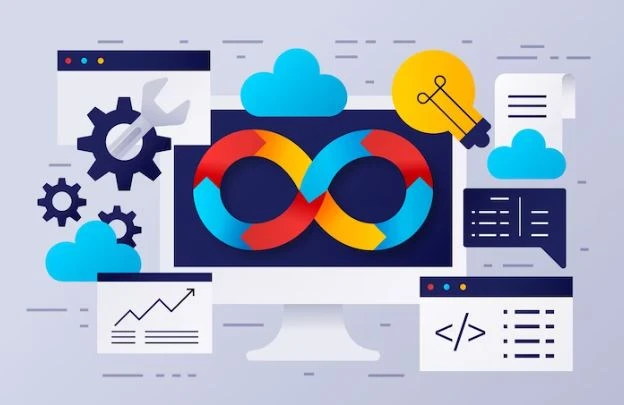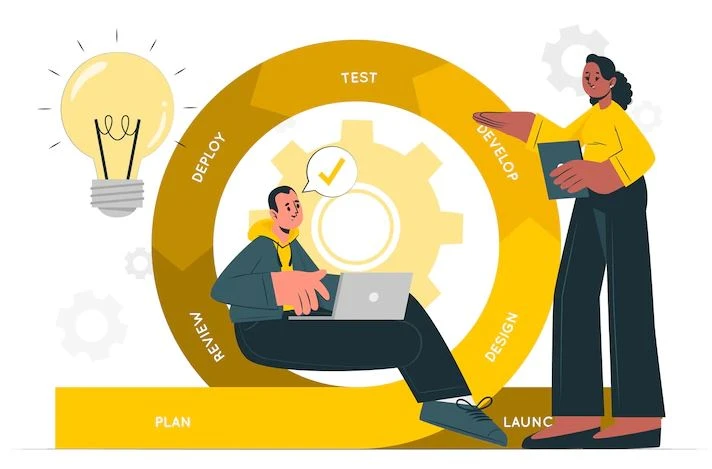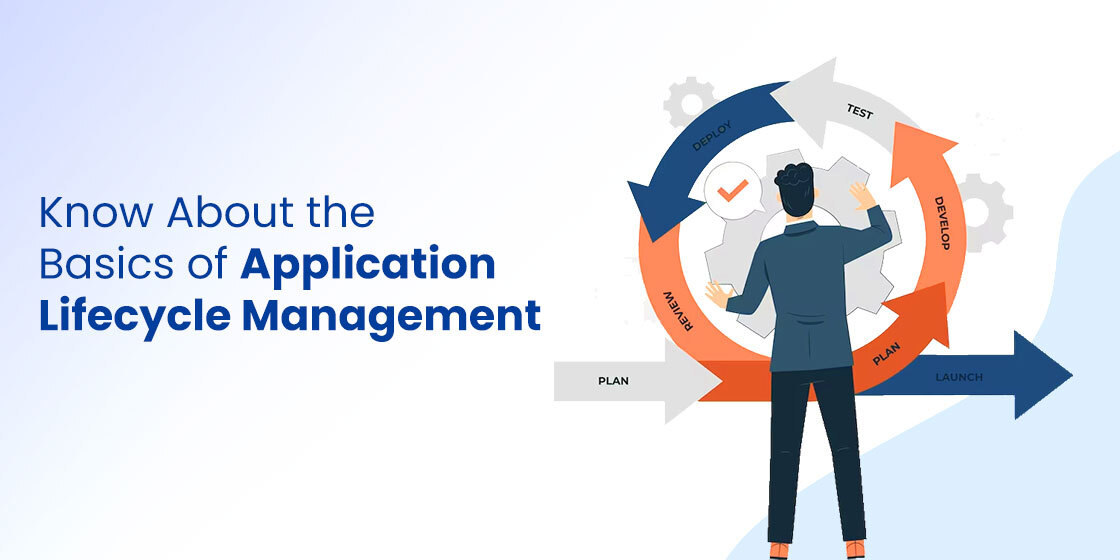Table Of Content
Why Every Development Should Know About Application Lifecycle Management?
Software development is not a one-off process. It requires you to always remain engaged in monitoring different aspects of the application. We all know that the technologies are quickly evolving, and with them the need of application features. Those businesses that demand regular upgrading of their in-house software products always remain ahead in the market. They know the importance of application lifecycle management, as it plays a key role to sustain any product for a long period of time.
Being a developer, you should know that a software application needs continuous monitoring. There are a lot of things that needs upgrading and enhancements over a period of time in software products. All of these post-development processes fall in the category of maintenance and support. It is certainly an important phase that also requires dedicated focus from the development companies. A lot of businesses take this support to make their systems free from error. They understand the need of software development services even after completing the overall project.
However, those who do not pay attention to it often struggle to maintain their operations. They usually think that software development is a one-off process, which is indeed a wrong perception. Basically, both development and maintenance are part of a bigger picture called application lifecycle management. It is a broad phase which covers different aspects of software management, starting from development to support services.
In this blog, we will discuss about application lifecycle management in detail. It will help all developers to know about the complete development and management phase of a software application. Let us first start from the basics understanding the core definition of application lifecycle management below.
What is Application Lifecycle Management (ALM)?

Many people think that application lifecycle management is a process that starts after the development. Well, this definition is not entirely true, because this process is not just a mere name of maintenance and support. It covers the whole application lifecycle, starting from development to support. This means that everyone working on a software project is a part of application lifecycle management. It encompasses a wide section of job, detailing people what to do in various departments.
Practically, the ALM process begins with the core application development. It then moves to the other stage in which maintenance and support is given to the application after the development. This phase is certainly continuous, as it requires to monitor the application status for a long period of time. The team involved in this phase is asked to regularly update different features that are getting outdated with time. That is how a software product is maintained, making sure to level it up as per the emerging market requirements.
Importance of Application Lifecycle Management

Knowing about application lifecycle management is important for every software developer. It helps them to know how to manage any application from start to finish. It is basically a whole pathway that defines different phases in which the software will be developed and managed throughout. Having this information allows teams to better prepare for every stage that will come towards them in a sequential manner.
For big enterprise level projects, the ALM process is termed quite important. It gives a brief picture to the team in an appropriate manner. Based on that, they plan operations and divide their teams accordingly to manage every stage. Earlier, this approach was not quite common, but with the introduction of smart project management tactics, ALM became a key process to handle high-level software projects efficiently.
Key Phases of Application Lifecycle Management

Application lifecycle management is a long term process that involves different stages. A development team must need to align itself keeping all these phases in mind. They might need to divide teams to handle different phases, as each one has specific requirements that need to be read properly.
If you do not know much about the ALM process, this blog will help you to get a correct understanding of it. Let’s take a look at the different stages below that are considered a strong part of application lifecycle management.
Requirements Management
Requirements management is the first phase of the ALM process. It is the stage in which development teams conduct the research and analysis about the project. They look into various areas that help to gather information about the product. Generally, this phase does not take much time, provided there are no complexities involved in the project. If there are some difficulties, then the research part becomes long, so that correct information can be gathered to take the project forward.
For better management, it is best advised to always document the information properly. The disagreements in any project generally arise when everything is managed verbally. It does not makes anything concrete which later brings confusion in mind. The best way to manage requirements is by writing everything down in a document called data processing agreement. It makes most of the stuff organized, reducing the level of confusion and clutter in minds.
The requirements penned down in this phase will come handy in all phases of the lifecycle. This information lets every team know about the basic project objectives. Using its main points, they plan their operations smartly, so that everything can be managed as stated in the project requirements.
Application Development
Once the requirements have been collected, the teams enter into the development phase. This is usually considered the most important stage because whole software application is built in this phase. Well, we will not discuss software development methodologies here as that will requires another lengthy explanation and discussion. However, we will try to illustrate why application development is an important part of ALM, and how it serves as a base to take things further in the overall software management lifecycle.
The application development process can itself be divided into various parts. This is generally done as per the defined development principles, as well as project requirements. The job of a manager certainly becomes very important in this regard, because he is responsible to deliver the goods at the end by managing each and every part of development.
The selection of a team for specific project plays a key role in development phase. It is the responsibility of managers to assign tasks to those professionals that are skilled in particular areas. They must need to know latest tools and technologies that are required in the development. Furthermore, they should know different methods to develop various types of applications, as that also becomes a key skill to build apps as per the given requirements.
Testing and Quality Assurance
It is quite important to test the application once its development has been completed. This is yet another important part of application development lifecycle that requires detailed attention. It is understood to everyone that applications with errors or bugs are of no use for customers. They are often hidden so deep that developers fail to find them while building the application. They only come to the light when the application is in execution phase and features are checked live to evaluate efficiency of the app.
To find out these errors preemptively, several QA tests are taken to ensure the quality of projects. This part is different from the development phase, as rather than programming, app functions are checked briefly to see whether they are performing as per the requirements or not. The requirements document formulated in the first stage plays a key role here. It clears out the confusion by comparing the results with the demands, so that everyone can understand the given objectives.
Nowadays, different automated testing tools are also available in the market. These tools are built to simplify the job of QA testers, so that they can focus more on other important tasks. If somehow errors are found in this phase, then they are reverted back to the development teams to resolve them as per the best practices.
Maintenance and Support
After completing the QA process, you will need to finalize and deploy the application. Many people think that this is the last stage of the project management, and they will not be responsible to manage the application after that. Well, this is not entirely true because many clients also ask for maintenance and support services after developing the application. They usually require these services their internal teams are technical skilled to manage such high-level projects.
So, to avoid getting into any difficulty, they take software outsourcing services to manage those systems professionally. This means that the maintenance and support also becomes a key part of project management. As a software agency, you need to incorporate this phase in your ALM process, so that a software product can be managed efficiently.
Generally, companies sign another contract of maintenance and support at the start of this stage. It is certainly a continuous process, hence it keeps running for a long period of time. The support teams check and update various types of application features during this process, so that the product could function properly as per the needed requirements.
Final Words
That concludes our entire article in which we have discussed about application lifecycle management in detail. Knowing about this process is important for every development team, as it helps them to build and manage all types of application software from start to finish. It lets them know how many phases will be there in the project development and whether they will be redundant or not. All of this information gives them a complete viewpoint about the development and management of a software project that eventually results in better quality.
If you are looking for a company that can develop and manage your company projects according to the ALM process, give us a quick call today. We will assist you to develop all types of software apps perfectly as per the latest industry trends.
You might also be interested in reading about the software development lifecycle in detail.
Frequently Asked Questions (FAQs)
| 1. What is application lifecycle management? Application lifecycle management is a process that defines all the stages involved in project management from start to finish. It is quite important for every team to know about the stages of ALM, as it helps them in software development planning efficiently. |
| 2. What is the importance of application lifecycle management? Having a sound knowledge about application lifecycle management is quite important. It provide a complete plan how build, manage and maintain any software project. Based on that, teams can divide different stages and execute necessary tasks as per the given requirements. |
| 3. Which stages are includes in application lifecycle management? There are multiple stages included in application lifecycle management. The purpose of having them is to build and manage software projects properly in every stage. It includes requirements gathering, application development, QA testing and application maintenance. |
| 4. What is the application lifecycle management used for? The ALM process is used by the teams to develop their project management strategy. It lets them know which type of tasks should be done in a particular stage to manage the overall project properly. |
| 5. What is the difference between ALM and SDLC? Software Development Lifecycle (SDLC) is a process that looks specifically into the development phase of an application. However, ALM is not just limited to the development phase. It emphasizes on the overall application lifecycle from development to maintenance. |
Empower your digital initiatives with BariTechSol, a premier custom software development company. Our skilled team tailors cutting-edge solutions to your unique needs. Elevate your tech experience and stay ahead in the digital realm. Partner with BaritechSol and code the success of your next big idea.


